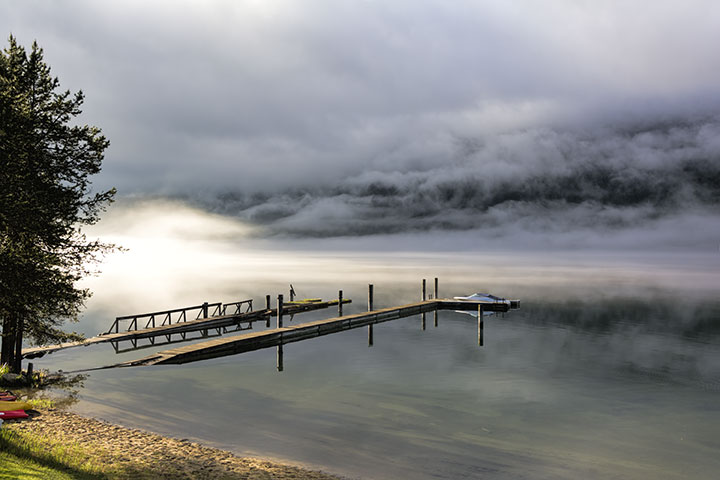Advection fog is the name given to the fogs that form, usually in the summer, when warm moist air from the land flows offshore (is advected) over a much colder ocean. Simple books will claim that it is merely the cooling of the air that produces the fog. Curiously, this is not true. It is also not true that such fogs are confined to oceans. The one that formed last night was on a lake.
Condensation can result from two distinctly different processes: either the cooling of water vapour, or the mixing of two parcels of vapour with different temperatures and moisture content. The latter process does not involve a net cooling, because at the end of the mixing, the average temperature remains unchanged.
Familiar examples of condensation produced by vapour cooling are found in cumulus clouds, wave clouds and dew. Familiar examples of condensation produced by mixing are seeing one’s breath on a cold day, and the steam fog often seen in the fall when cold air (and so cold vapour) flows over a still warm lake. The colder vapour mixes with that warmed by the lake and the fog appears in the form of tiny convective towers because it is warmed from below (e.g., steam fog).
An advection fog forms in much the same way as steam fog, but upside down. Now the lake is cold and is overlain with warm vapour. Vapour mixing, not cooling produces the fog.
It is spring and the Lake is still cold from the winter. A few warm days were followed by rain which moistened the air at the surface. The layer of fog seen at the water surface is an advection fog caused when the warmer vapour from above mixes with the colder vapour just above the water. It forms a stable layer because, unlike the (convective) steam fog, the layer is cold below and warm above. However, on the side of the mountain, wisps of steam fog rise off the warm, moist trees. Both fogs were formed by vapour mixing, but look different owing to one being convective and the other stable. 

Stunning photo